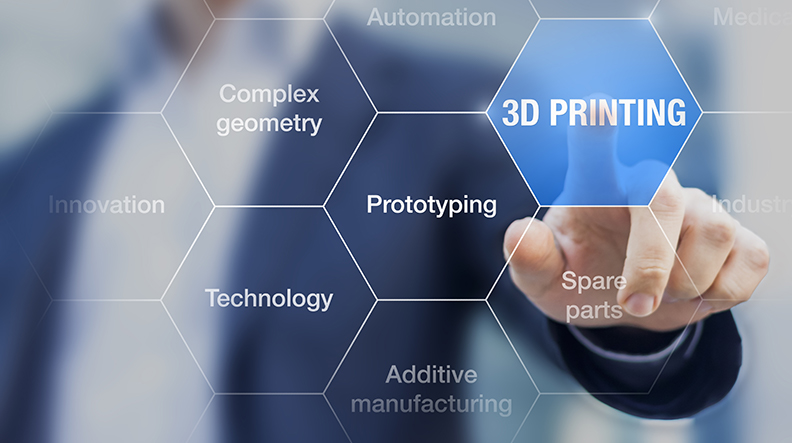
Editor’s Note: Earlier this year, we asked OEMs how much prototyping they do via 3D printing; 85% of respondents answered “some” and 15% “all.” Knowing that lead times are a primary prototyping challenge and that companies are becoming more experienced with additive manufacturing and 3D printing, we asked Osseus Fusion Systems—a small additive manufacturing-focused spine company—to share how they use 3D printing in-house to handle this and maintain efficient surgeon engagement.
Additive manufacturing (AM) is fundamentally changing how OEMs prototype in order to finalize product design.
OEMs can employ AM techniques to rapidly generate prototypes using 3D CAD software and affordable, desktop-sized additive or 3D printing printers. The advantages from a product development standpoint is that engineers can employ rapid prototyping to identify design flaws in products in a more timely and cost-effective manner, as well as evaluate the effects of different printing orientations and locations of support materials, which can offer engineers insight into ways that products will be manufactured at larger scales.
Additionally, OEMs can employ rapid prototyping to augment surgeon engagement in the form of receiving feedback, fulfilling surgeon requests and expediting product design timelines. The best way to receive customer feedback on a physical product is for the customer to hold the device in their own hands.
By using plastic-based rapid prototyping techniques, OEMs can produce prototypes in several hours, compared to possible multi-week lead times working with some contract manufacturers. Many smaller OEMs cannot justify purchasing or leasing the subtract-manufacturing capital equipment required to produce their products. However, these OEMs can justify the purchase of low-cost, desktop-sized additive printers that use FDM/FFF or SLA/DLP manufacturing techniques.
For a couple of hundred dollars, one can buy a low-cost FDM printer that can produce parts with a 50-micron laser resolution and an accuracy of 10x10x5 microns.
For a couple of thousand dollars, one can buy a low-cost SLA printer—some of which can produce parts with a 25-micron layer thickness and featuring a 140-micron laser spot size. One downside is that these desktop printers, while becoming more accurate, are not as accurate as subtractive manufacturing equipment.
Osseus Fusion Systems conducts the majority of its implant prototyping with AM, first on desktop printers and then on industrial laser-based powder bed fusion printers. Desktop printers are ideal when a low-cost prototype is needed quickly, typically for product demonstrations or evaluating the manufacturability of concepts. For functional prototypes, Osseus employs a variety of laser-based, powder bed fusion printers and integrates conventional post-processing techniques when necessary for specific surface properties, tolerance stack-ups and functionalities.
For instrument prototyping, plastic desktop printers provide a viable solution for non-functional prototypes ideal for OEMs that lack in-house manufacturing capabilities. Laser-based, powder bed fusion printers are not yet a suitable option for scalable instrument manufacturing with the exception of smaller, single-piece instruments that do not have complex mechanical or structural requirements.
Despite the push by many orthopaedic companies to employ AM, potential downsides do exist. Long, multi-component and functional stainless steel instruments are typically not manufacturable with existing additive technologies; due to the complexity of these products, subtractive manufacturing processes still reign supreme.
Asher Breverman is the Additive Manufacturing Engineer at Osseus Fusion Systems, a Dallas, Texas-based OEM focused on spinal implants manufactured with emerging technologies such as additive manufacturing. Breverman manages the 3D-printing product portfolio in both engineering and product management capabilities at Osseus. Since graduating from Drexel University with a Master’s degree in Mechanical Engineering, Breverman has received his PMP certification from the Project Management Institute and an Additive Manufacturing certificate from the Massachusetts Institute of Technology. He has a passion for using new technology to design products that help people and volunteers with 3DHEALS, a global professional organization for 3D printing.




